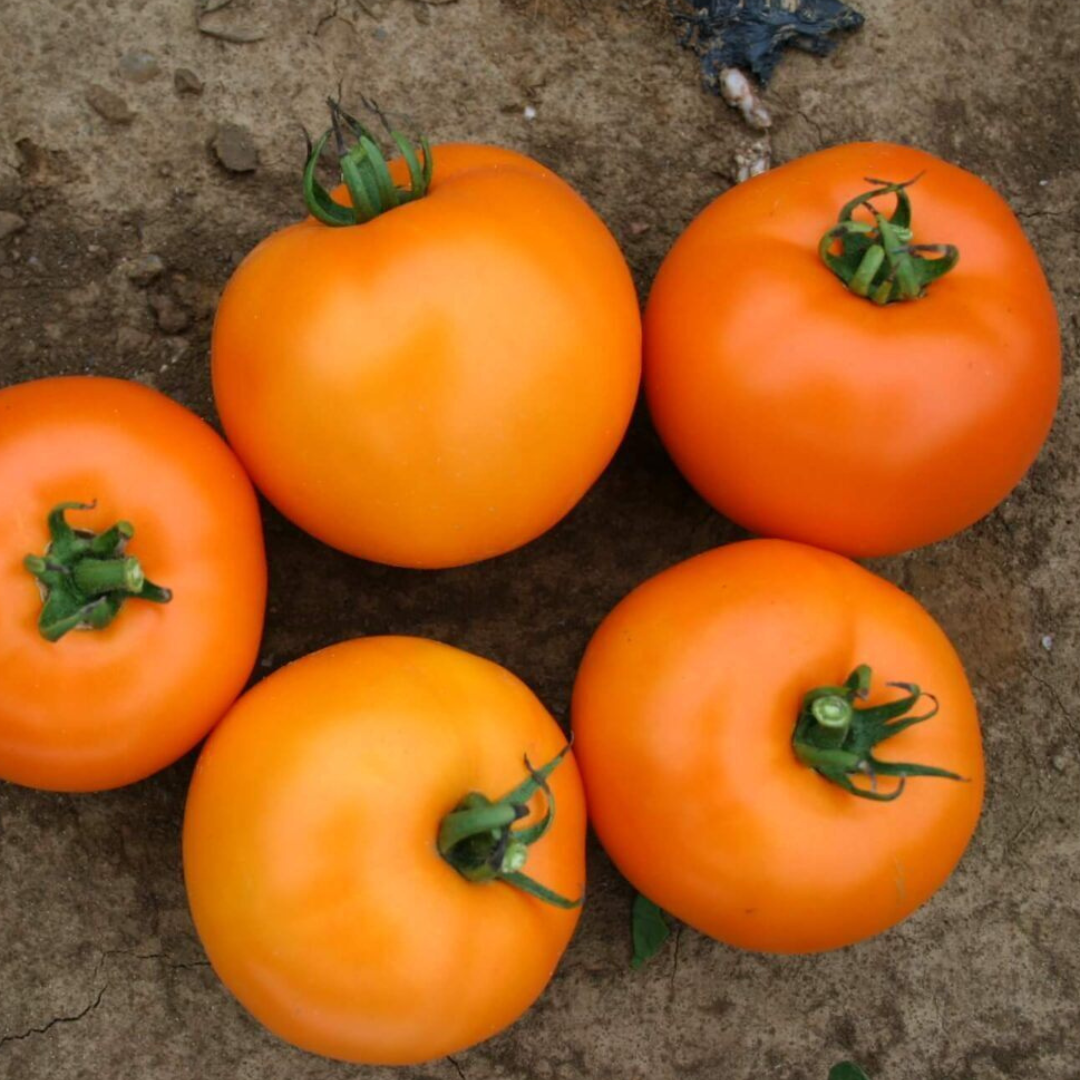BHN 871 Gold Tomato Seed
BHN 871 Gold Tomato Seed
Couldn't load pickup availability
Seed Type
Seed Type
F1 Hybrid (Untreated)
Seeds Per Pack
Seeds Per Pack
10
Days to Maturity
Days to Maturity
75
Disease Resistance
Disease Resistance

Why Grow BHN 871 Gold Tomato?
Beautiful Orange Tomatoes BHN 871 Gold is a hybrid, determinate tomato variety with a beautiful orange color at peak ripeness. This exceptional tomato variety produces high-yields of 12 oz fruits that are smooth and round. Unlike most yellow or orange tomatoes, BHN 871 Gold tomatoes have a firm and meaty texture with less gel inside. This makes it a great variety for sandwiches or making thicker sauces.
High-Yielding and Disease-Resistant Yellow and orange tomatoes less acidic than red tomatoes and great for folks that have issues with acidic foods. BHN 871 Gold has a solid disease-resistance package which includes resistance to Tobacco Mosaic Virus among others. Because this is a high-yielding determine variety, be sure to trellis it well!
BHN Gold 871 Tomato Growing Tips
• When to Plant Tomatoes
Tomatoes are a "warm season" vegetable that should be transplanted in the garden once the risk of frost has passed in the early spring months. Start the seeds in a greenhouse or seed starting room approximately 6 weeks before your intended in-ground planting date. Give each of these plants approximately 4' or more of space in your garden.
Timely planting is important for those in southern climates, as hot summer weather can be rough on tomato plants. Gardeners in warmer climates should aim to get their plants in the ground as soon as possible in early spring. Gardeners in areas with milder summers have the advantage of a longer tomato season, and don't have to be as timely with planting.
BHN 871 Gold is a determinate tomato variety, which means the plants are relatively compact and have a finite life span. Determinate tomato varieties produce loads of tomatoes in a shorter time frame, which is a great option for canning or preserving lots of tomatoes at a time. Because the compact plants get so loaded, you will need a strong support system. We prefer to use the Florida Weave trellising system for determinate tomatoes, but sturdy cages will work as well.
• How to Fertilize Tomatoes
It's always a good idea to apply some pre-plant fertilizer to the soil when planting tomatoes. We like to add a handful Coop Gro organic fertilizer in the planting hole for each tomato plant. This ensures the plants have the right nutrients to put down roots in their new soil.
Fruiting vegetables like tomatoes will benefit from something called "spoon feeding." This process involves frequent fertilizations at lower concentrations, as compared to fertilizing them heavily once.
Once your tomato plants start to grow after transplanting, feed them every 2-3 weeks with a relatively balanced fertilizer. We like to sprinkle Coop Gro around the plants or make a liquid solution of AgroThrive Fruit & Flower and pour that alongside the plants. Tomato plants will also benefit from "hilling" when they grow to approximately 12-18" tall.
*To learn more about how to hill tomatoes, watch this video.
• Harvesting Tomatoes
While there is much hype about the quality and flavor of "vine ripe" tomatoes, allowing tomatoes to ripen on the vine can be a risky proposition. As they ripen, they become susceptible to attacks from birds or pests like tomato hornworms.
As a result, we prefer to harvest our tomatoes when they start to turn pink. We then set them inside on a counter so they can continue to ripen. This does not compromise the flavor, but it does save our tomatoes from being eaten by pests. If you have minimal pest pressure, feel free to let your tomatoes ripen on the vine.

